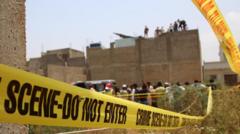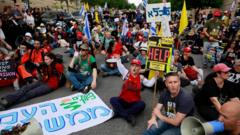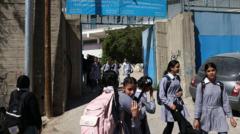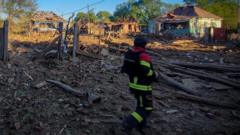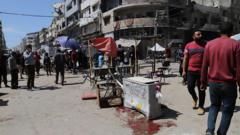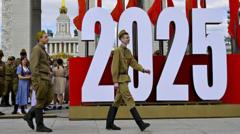**After a lengthy and brutal conflict, a cease-fire offers a temporary reprieve for residents of Gaza and Israel, overshadowed by concerns about the future and humanitarian needs.**
**Cease-Fire Brings Relief Amid Uncertainty for Gaza and Israel**

**Cease-Fire Brings Relief Amid Uncertainty for Gaza and Israel**
**As damage assessment begins in Gaza and released hostages reunite with families, both sides embrace the fragile peace.**
As the cease-fire between Israel and Hamas enters its fourth day, the aftermath of prolonged conflict is evident on both sides of the border. Gazans began to evaluate the extensive destruction in their neighborhoods, while Israelis anxiously awaited updates on the fate of hostages released during a recent swap facilitated by this temporary truce.
In Gaza, families salvaged belongings from the rubble of their homes, remnants of a war that has wreaked havoc for over 15 months. Local authorities indicated the tragic toll the war has taken on emergency services, revealing that almost half of the Gaza Civil Defense's personnel have been either killed, injured, or detained. The scenes narrated a collective grief and resilience as Gazans confronted the harsh reality of their devastated environments.
The hostage exchange, which saw three Israeli hostages released in return for 90 Palestinian prisoners, sparked celebrations in the West Bank. Emotional reunions took place at Israeli hospitals, where families welcomed back loved ones. In Gaza, the freed Palestinian prisoners were greeted with fireworks and cheers, emphasizing the contrasting emotions felt across the terrain.
While the initial ceasefire has provided a pause in violence, it has sparked rising apprehension about the future stability of the region. Returning Gazans faced reports of widespread destruction; in some areas, mayors reported more than half of the homes lost to warfare, with critical infrastructure like the sewage system almost entirely collapsed. Aid agencies have voiced concerns over the need for unhindered access to humanitarian assistance, stressing that the influx of aid trucks is crucial for alleviating the pressing needs of the population.
In Israel, families of the hostages remain on edge awaiting news on the next phase of the negotiations, while also expressing frustration over the lopsided nature of the deal, where the number of released Israeli captives sharply contrasts with the number of Palestinian prisoners. Many families have echoed sentiments calling for the unconditional return of their loved ones held in captivity, no matter the costs involved.
Despite the celebration of a temporary truce, reports of armed Hamas militants returning to patrol Gaza highlighted the group’s intention to reclaim authority in the region. This resurgence comes amidst public dialogues around Israel's commitment to dismantle Hamas's military capabilities, raising questions about future conflicts and the potential for ongoing violence.
Experts suggest that both sides recognize the strategic value of the cease-fire, yet many remain skeptical about its longevity. While Hamas showcases its strength, Israeli leaders have reiterated their goal of dismantling the militant group, indicating a possible resurgence of hostilities in the future.
As the cease-fire continues, the international community watches closely, cautiously optimistic yet aware of the fragile peace that hangs in the balance, while both Israelis and Palestinians grapple with the daunting aftermath of war and the uncertain road ahead.




